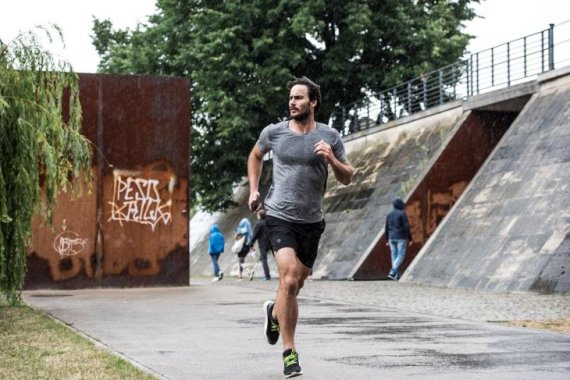
Digital Marketing Expert Andreas Bersch advises companies on suitable digital measures for them to take. Influencer marketing is of course part of the mix of communications.
For ISPO.com the CEO of the digital agency Brandpunkt provides insight into practice. Anyone who would like to hear more about this can visit his talk at ISPO Munich 2018 during the Academy Conference.
ISPO.com: Is influencer marketing suitable for every brand?
Andreas Bersch: It is suitable for most brands. Of course you should keep the number of channels in view and see whether the investment is worth it. However, you should especially pay attention to influencers’ content and orientation. Broadly positioned influencers can be used when the product is one that does not require much explanation and that is also suited to a broader target group.
Especially in the sports industry, however, there are a large number of niches and many products for these people. Here, when looking for potential partners on influencer pages, it becomes more important to pay attention to the tonality of the account and the quality of the followers. The number of followers and the traffic figures are then only of secondary interest.
How can I find the right influencer?
You can, of course, search through Instagram or also YouTube using different tags, keywords and categories. This is how you get your first preselection. Then you need to go into detail manually and look through the accounts individually.
That always depends a little bit on the product that I wish to promote. I must ask myself the question of how deeply the influencer has to be into the topic. If it is a mass product, I can also use influencers who work with the most diverse topics.
How important is it to select the right channel?
That is a very important matter. In some cases, a mixture is the best solution. On YouTube, compared to Instagram, we have very different options for presenting topics and products. An image is only viewed for a few seconds. On YouTube, a much more extensive presentation is possible. In matters of branding and engagement, you are definitely in the right place with Instagram. When the matter is product tests or presentations of events, which require more time for explanation and presentation, then YouTube is the right choice – or a good, old-fashioned blog.
Is Facebook way ahead of the others, here?
The highest levels of activity does definitely not take place on Facebook. Most influencers do have a Facebook page, where they announce their activities or link to articles. But influencers are really active on Instagram and YouTube. These platforms are far ahead of Facebook. It is certainly the largest network. But in the field of influencers it is only number three, if at all.
Which factors speak in favor of employing influencers, as a sports brand?
1. The broad and diverse pallet of influencers. These are, on the one hand, the professionals. In part, these also have a very extensive reach through their channels.
And then there are sports influencers who pursue the matter as a professional career. These then, for example, give deeper insight into their everyday lives and report on training sessions and programs.
The third category is the everyday athletes among the influencers. These set examples for all everyday athletes. In part, they demonstrate how they have gone from being a non-athlete to a completely different – sporty – person.
2. Imagery. This, especially, plays into the hands of influencers in the sports industry. If they can present well and then also have someone who can photograph and film this well, then this all works very well together in sports topics.
Can you think of a few good case studies from the sports industry?
Here, for example, Asics with the Frontrunners comes to my mind. The exciting thing about this is that, for the Frontrunner team, Asics looked for people from the most diverse performance ranges. Professionals, semi-professionals and normal amateur athletes are included in this. These then produce athlete profiles and blog articles.
There, very specific tips are given and stories are told, for example, for everyone who wishes to take part in a marathon, but also for amateur athletes one of the frontrunners might simply present a sneaker. The address given here will then be very different from the one given to the potential purchasers of the items that are geared towards more experienced athletes.
Therefore, Asics can speak to different target groups very well through its own channels, using different influencers.
Another very successful venture was the fitness app Freeletics. This one has also benefitted very strongly from the self-representation of some fitness fans: Someone has been training and then wishes to share this with friends. The Freeletics topic was already a very big one on Instagram, through Freeletics trainers the topic became even more widespread. These trainers give tips and get very quickly many followers and also a lot of attention for the app and the product.

 Sports BusinessSki Mountaineering Goes Olympic: What Milano-Cortina 2026 Means
Sports BusinessSki Mountaineering Goes Olympic: What Milano-Cortina 2026 Means
- ISPO awards
- Mountain sports
- Bike
- Design
- Retail
- Fitness
- Health
- ISPO Job Market
- ISPO Munich
- ISPO Shanghai
- Running
- Brands
- Sustainability
- Olympia
- OutDoor
- Promotion
- Sports Business
- ISPO Textrends
- Triathlon
- Water sports
- Winter sports
- eSports
- SportsTech
- OutDoor by ISPO
- Heroes
- Transformation
- Sport Fashion
- Urban Culture
- Challenges of a CEO
- Trade fairs
- Sports
- Find the Balance
- Product reviews
- Newsletter Exclusive Area
- Magazine




